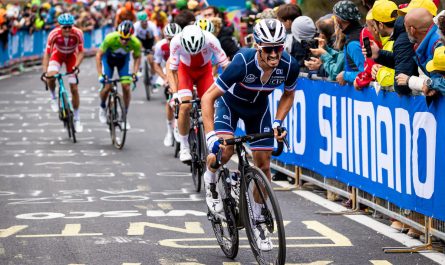More accusations of cheating have been leveled at athletics.
The Sunday Times and a German broadcaster believe a big hacked database demonstrates “the incredible amount of cheating by athletes at the world’s most famous tournaments”.
Based on 12,000 tests performed on more than 5,000 athletes between 2001 and 2012, the data was generated.
The “largest leak of blood-test data in athletic history” is how people refer to it.
According to the statistics, athletes who have reported dubious tests have won more than a third of the medals at the Olympics and world championships, including 55 gold medals.
415 abnormal tests were performed in Russia, followed by Ukraine, Morocco, Spain, Kenya, Turkey, and other countries.
What, though, is doping?
Doping is the practice of athletes using illicit drugs to enhance their performance.
The five categories of doping are prohibited substances.
Stimulants and hormones are the most often used.
Although they improve performance, they come with health hazards and are forbidden by sports’ governing organizations.
What varieties of doping are there?
Androgenic substances like anabolic steroids are the most popular. They enable athletes to work out more intensely and gain more muscle. Yet, they can result in kidney damage and an increase in hostility.
For men, adverse effects include baldness and poor sperm counts, whereas for women, side effects include increased facial hair and a deeper voice.
Typically, anabolic steroids are either injected into muscles or taken as tablets. Some are creams or gels that are applied to the skin.
Then there are stimulants, which increase heart rate and blood flow to make athletes more alert and to mask weariness. Nonetheless, they are addicting and, in rare instances, can cause cardiac failure.
Diuretics and masking substances are also used to drain fluid from the body, which might conceal the use of other drugs or aid athletes in “making weight” in sports like boxing and horse racing.
Moreover, there are substances known as cannabinoids and narcotic analgesics. They are used to cover up discomfort brought on by an accident or exhaustion, but they can exacerbate ailments. They are also compulsive. Codeine is legal while drugs like morphine and oxycodone are prohibited.
Peptide hormones are another category. They include chemicals like HGH (Human Growth Hormone), which increases muscular mass, and EPO (Erythropoietin), which increases bulk, strength, and red blood cells to give athletes more energy.
Blood doping, in which blood is drawn from the body and then pumped back into it to increase oxygen levels, is a less popular practice. This behavior is prohibited and can result in renal and heart failure.
Since they are anti-inflammatory, alter the metabolism of carbs, fats, and proteins, and control the levels of glycogen and blood pressure, glucocorticoids can conceal major damage.
Finally, because beta blockers lower heart rates and lessen hand trembling, they are prohibited in activities like archery and shooting.
Well-known doping instances
The most well-known instance of doping occurred at the Olympics in 1988, when Canadian sprinter Ben Johnson easily won the 100-meter race at a pace that set a new world record of 9.79 seconds.
Yet after the competition, stanozolol, a synthetic anabolic steroid, was discovered in his system, and he failed a drug test.
Carl Lewis, who had placed second in Seoul, received the championship.
Some well-known athletes who have been banned include American sprinters Justin Gatlin and Marion Jones, as well as British competitors Dwain Chambers and Linford Christie.
Most recently, in a January 2013 interview with Oprah Winfrey, cyclist Lance Armstrong acknowledged using performance-enhancing drugs.
He was permanently barred from sports and deprived of his seven Tour de France victories.
Information taken from the website: https://www.bbc.com/




